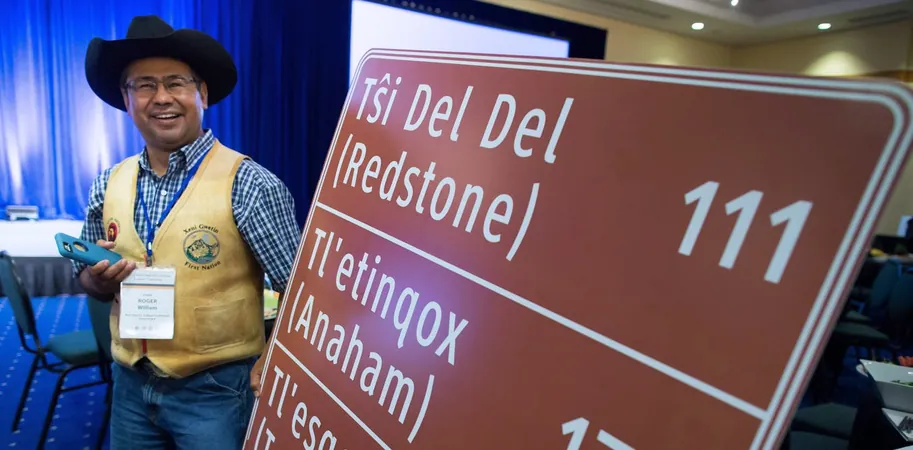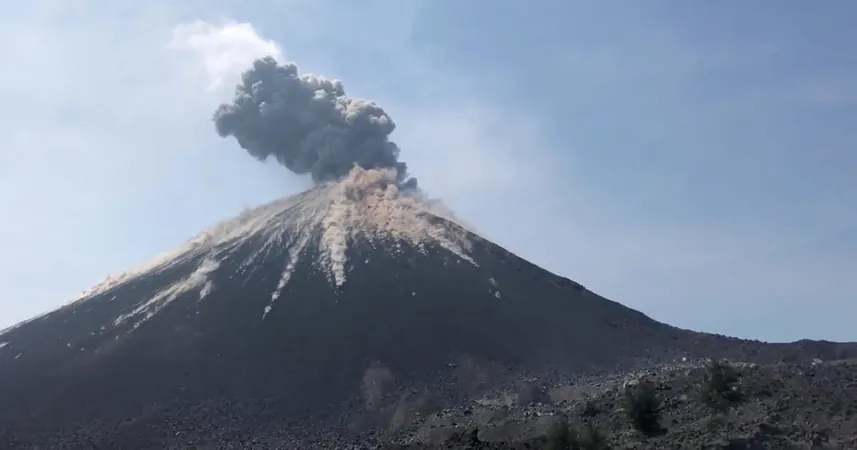
Reviving Indigenous Languages: Can AI Be the Lifeline?
2025-05-11
Author: Daniel
A Global Crisis for Languages
With approximately 3,000 languages teetering on the brink of extinction, the quest to revive these languages has never been more urgent. Colonization, globalization, cultural assimilation, and environmental changes are erasing tongues that hold centuries of knowledge and tradition.
The Role of AI in Language Preservation
As artificial intelligence permeates various facets of our lives, the question arises: can AI play a crucial role in the survival of Indigenous languages? A stark reality highlighted by the World Economic Forum shows that a mere 100 of the world’s 7,000 languages dominate AI training, predominantly in English.
This imbalance raises a pressing concern: will AI ultimately aid in revitalizing endangered languages, or will it contribute to their further decline?
Innovative Solutions: Language in a Box
Michael Running Wolf, a Northern Cheyenne computer engineer, introduced a groundbreaking concept in a recent TEDx talk: a cedar box containing an offline AI system designed to teach languages. This device—beautifully adorned with dragonfly motifs—acts as a digital language curriculum, blending ancient traditions with cutting-edge technology.
As technical director of the First Languages AI Reality initiative, Running Wolf is passionate about empowering Indigenous scholars and technologists to combat language loss. His vision includes voice-controlled AI tools that can pronounce unfamiliar sounds accurately, thereby helping learners master pronunciation and oral traditions—essential when fluent speakers are sparse.
Global Efforts: Digital Inclusion in the Philippines
Across the globe, AI scholar Anna Mae Yu Lamentillo is making strides for Indigenous languages in the Philippines with her creation, NightOwlGPT, an AI-powered translation app that supports nine endangered languages. Lamentillo is adamant about ensuring that all languages, not just the dominant ones, establish a foothold in the digital realm.
However, the proliferation of AI comes with a caveat. Lamentillo warns that unless AI development becomes more inclusive, it risks echoing past patterns of colonization—leaving the majority of languages behind in the digital age.
Challenges and Diversity in Africa
At a recent workshop, Emmanuel Nguélé Um, a linguistics professor from Cameroon, shared insights into Africa's complex linguistic landscape. His research team is utilizing Mozilla’s Common Voice platform to create open-source datasets for 31 African languages, fostering inclusivity in speech recognition and voice AI.
Yet, building datasets for languages with numerous dialects presents significant hurdles. The lack of a standardized writing system for many African languages can impede the development of effective teaching tools.
A Future with Inclusive AI?
Despite these challenges, Professor Nguélé Um is optimistic. He believes that if AI is implemented thoughtfully, taking into account the rich diversity and fluidity of African languages, it can significantly bolster language preservation efforts.
As society continues to embrace AI, the potential for these tools to support endangered languages is both promising and necessary. But this requires financial investment, accurate training data, and community engagement to ensure that data sovereignty and equitable access are prioritized in the AI landscape.




 Brasil (PT)
Brasil (PT)
 Canada (EN)
Canada (EN)
 Chile (ES)
Chile (ES)
 Česko (CS)
Česko (CS)
 대한민국 (KO)
대한민국 (KO)
 España (ES)
España (ES)
 France (FR)
France (FR)
 Hong Kong (EN)
Hong Kong (EN)
 Italia (IT)
Italia (IT)
 日本 (JA)
日本 (JA)
 Magyarország (HU)
Magyarország (HU)
 Norge (NO)
Norge (NO)
 Polska (PL)
Polska (PL)
 Schweiz (DE)
Schweiz (DE)
 Singapore (EN)
Singapore (EN)
 Sverige (SV)
Sverige (SV)
 Suomi (FI)
Suomi (FI)
 Türkiye (TR)
Türkiye (TR)
 الإمارات العربية المتحدة (AR)
الإمارات العربية المتحدة (AR)